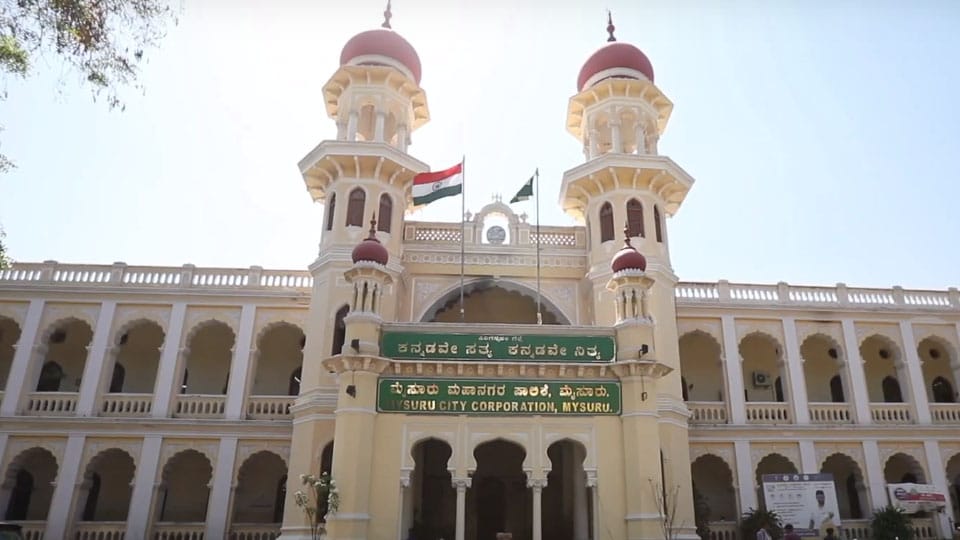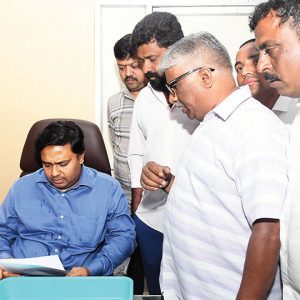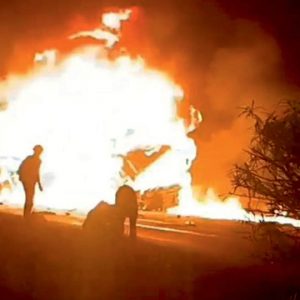Sir,
I wish to appeal to the authorities of Mysuru City Corporation (MCC) and the Corporators to adopt latest technology to conserve electricity wasted daily through thousands of street lights not being switched off well in time. It is strange to observe several street lights burning well after sunrise.
In these summer days, sunrise is quite early and a good 1.5 hrs of electricity could be saved if all the street lights could be switched off through a remote control-enabled switching system. At present this activity is manual-dependent and may have been contracted to a few agencies.
The persons to manually do this work are not always chosen from those who reside in nearby areas. I happened to meet such a person who gave an alibi of having to come from a far off city centre to as far as Ramakrishnanagar or Vivekanandanagar and Aravindanagar. What a waste of precious fuel and time besides not doing the work satisfactorily. During rainy season, the person may not be able to turn up at all for the whole day.
In some areas, many senior citizens have taken upon as social responsibility to switch off the lights during their early morning walk. But here lies the danger to them in so doing. At many such switch locations, the boxes are heavily corroded, no doors and no latches. The wires are left bare and hanging out. The connection is made through bare wire engaging each other loosely and generate a spark while attempting to disengage the same. I have seen many elders doing it with bare hands. It can result in shock or burn to them.
One can see such boxes “decorating” all the streets. Children are likely to come in live contact and in the rainy season leakage due to earthing may lead to animals come in contact while grazing near the poles.
Hope the authorities concerned will take note of this and do the needful.
– Prof. B.S. Shankara (retd.), Mysuru, 6.6.2020
You can also mail us your views, opinions, and stories to [email protected]








Very good observation. I had raised the same issue few years back when I met the city mayor. Nothing has been done so far. The lights are switched on 1 hour (average) early in the evening and switched off 1 hour late in the morning. Assuming 12 hours of operation, we are wasting about 16% of power. With latest technology, one can turn on/off the street lights with a touch of a smart-phone. Power saved is power generated. I am sure the investment on new technology can be recovered within a year by saving power.
Hello Bala and Prof
Your imagination is running wild! If you can switch off the lights of a home, which has one main control, through a smart phone, does not mean , you can switch off a distributed power flow such as those that power street lights. This is much more complicated. Yes, you could do it centrally, with the help of a computer operating relays. Let us assume that the Electricity Board takes your suggestion and ensures that the street lights can be switched off through a smart phone. What prevents any one, who has a smart phone-in India, possessing a smart phone has more priority than buying food to survive, hence most people have smart phones, and imagine what would be chaos, if so many smart phones, including those in the hands of those who want to rob homes and people, are able to switch off the street lights at will? The electricity flow to the street lights should be able to be controlled with seasonal adjustments-which means, a timer operated central switch, programmed to take into account the Sun rise and Sun set timings during the seasons.
These days, the reader of the SOM boasts titles: doctor/professor/major general, thinking that he knows best. This “professor” as a responsible citizen, should have contacted both the Electricity Board and the MCC to warn them of the hanging exposed wires , which could electrocute those in contact with them. Instead, he is happy to post just a reader’s voice!!
In India, even the home wiring is a veritable death trap, as the sockets in many places do not have a ground connection, endangering the person who plugs a device, as any electricity leakage not finding the path to the ground, passes through the person operating the plug, which is invariably a 2-pin plug. It is a typical third world infrastructure, which is so designed considering that human lives are cheap. Locating boxes where switch reside for street lights is a prime example to what extent Indians value human lives!!
Hello “Hello Prof and Bala!”: Personal attacks are not warranted.
It is not the imagination, it can be implemented. Well, this is the not the forum to discuss each and every technical aspect of what I suggested. All remote operations through smart-phone need proper security measures, like electronic money transactions. By the way, where is the seasonal adjustment if on/off is done manually through the touch of a phone or a computer keyboard by the authorized person?
“These days, the reader of the SOM boasts titles: doctor/professor/major general, thinking that he knows best. This “professor” as a responsible citizen, should have contacted both the Electricity Board and the MCC to warn them of the hanging exposed wires , which could electrocute those in contact with them. Instead, he is happy to post just a reader’s voice!!”
Do you think concerned authorities are not aware of that? They do and sometimes complaining in public forum helps. I fully support and agree the views of the Professor.
Hello Bala
You are miffed because, you have not understood the basics of a control system. This is not a personal attack, but pointing out how the imagination can run wild! Take your example of electronic transaction. There is a central control and checking in regards to the person’s identity.
Even with these checks, people transferring money from abroad, have learnt lessons, particularly when transferring money to India,. The destination person’s identity is usurped in many cases.;hacking has become sophisticated, and tools to do this are easily available., and can be deployed through a smart phone.
“By the way, where is the seasonal adjustment if on/off is done manually through the touch of a phone or a computer keyboard by the authorized person?”
Read what I said:
“The electricity flow to the street lights should be able to be controlled with seasonal adjustments-which means, a timer operated central switch, programmed to take into account the Sun rise and Sun set timings during the seasons”. Read particularly this phrase: ” should be able to be controlled”, which means overriding the manual control, which should be feasible. If you are a power engineer, you would know, the distribution networks , the street light power network belongs to this category is centrally controlled, and automated. Extending this facility, in these days of computer controlled systems is a very feasible effort.
Give me an example, where a reader’s voice is acted upon by an authority in Mysuru.
Hello:
As I said, there are much more technicalities, I am not writing a functional and design document here. Please understand the scope of my comments and leave it there, without going deep into the technology.
Every remote operation can be secured, and the level of security depends on the type of operation and the investment. I am suggesting model similar to smart-meter, just to give you an idea. I would not go for sensor based control of street lights because of high-maintenance cost and some practical issues, which I can’t elaborate here.
“Give me an example, where a reader’s voice is acted upon by an authority in Mysuru.”: There are tons of examples, you may verify the same from SoM.
@Bala
Look, it is easier for you to learn, than arguing about something of which you have no idea. You are suggesting controlling the power supply of street lights-which falls under a nation;s critical infrastructure: meaning an asset which is necessary for a nation to function. You are suggesting a security level for a smart phone to control securely the power supply in these structures,in an area , giving the example of a smart meter, which itself reveals that you need to learn more about security and its management. The mart meter readings can only be read and not controlled through a smart phone. Otherwise, I could alter its readings, through my smart phone, thus reducing my energy bills to a few Dollars! Security issue does not matter, as hacking can be resorted to. But the Smart meter link to central control of an energy company is like a bank-to-bank secure transaction.
About electronic transfer:
Because of the availability of cheap skilled labour, many Western banks, have established customer centres in India. Some Indians who worked in these customer centres, had learnt the information on the electronic transfers of Dollars by persons who make transfers regularly, in many cases had released this information to criminals, in return for a percentage of the transfer money diverted. Hence, banks in Western countries, caution their customers to use the banks secure link : not available to a smart phone user, to a central bank in India, who in turn route the money to an individual account. Companies like the Western Union, government organisations like post offices operate at a level of security with links that are not available to an individual customer who uses his smart phone.
You think of a big city like Bengaluru and its traffic lights. How is it controlled centrally? Can you change a traffic light at the TownHall junction there, with your smart phone? NO. Since the days, Sir K Seshadri Iyer Commisioned Shivasamudram Hydroelectric station and brough street lights to Bengalore -first in Asia , these lights had been centrally controlled. The individual bohes, I understand which came about later is a folly. Hence, reverting back toa central control is feasible and must be done.
correction: Individual boxes
Interesting discussion. The issue of street lighting, and the danger posed by these open boxes with manual control inside, and the rusty wiring spilling out, should be worrying. If this is the case in a modern city like Mysuru, it should be happening in cities all over India. This is not Modi’s: “Digital India”, but hand-operated street-lighting India which is veritable death trap by electrocution!
But the Chandrayaan should be the priority of course to show to the world, that India is a modern technologically advanced society! Rusty wires coming through open boxes ready to electrocute people, should be a minor issue!.
During 1950s, as a school boy, I often travelled with my parents in the express train from Mysuru to visit our relatives in Bengaluru. In those days, there was no automatic signalling and routing of trains on tracks between stations . The express trains stopped at 5/6 stations in between. The way the manual signalling and routing was activated is through a key-more like a small metal ball, placed in a pouch of a tennis racket like structure with a large circular head, but without strings. This key is picked up from the station master by the engine driver assistant when the train stops at the station so that the next station’s station master can insert it in the signalling box in his office and crank it to route the train further If the train did not stop at the next station, the driver assistant threw the racket structure on the platform of the station and at the same time picked up another racket structure with the key for the next station, from that station’s assistant. This exchange was skilfully done. Some times, when it failed, the train had to break, and the stop may be some where in between the stations, until the station assistant arrived, with the missed racket structure with the key! Very much enjoyable experience for youngsters, watching how this transfer was done. The automatic signalling and routing of trains on tracks killed this enjoyment altogether!
The street light switching in 2020 India, seems to have been frozen in the state of that bygone era of manual train signalling and routing!! But , Digital India is assured and another Chandrayyan is being planned! Instead of Chandrayaan, this mode of controlling street lighting should really be the show case!!